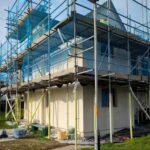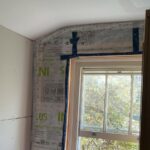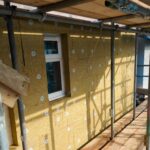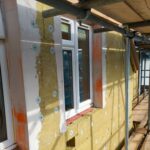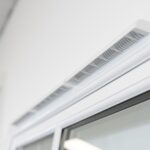In Loft, Loft Insulation by Robert Wheeler / 7 December 2023 / 0 comments
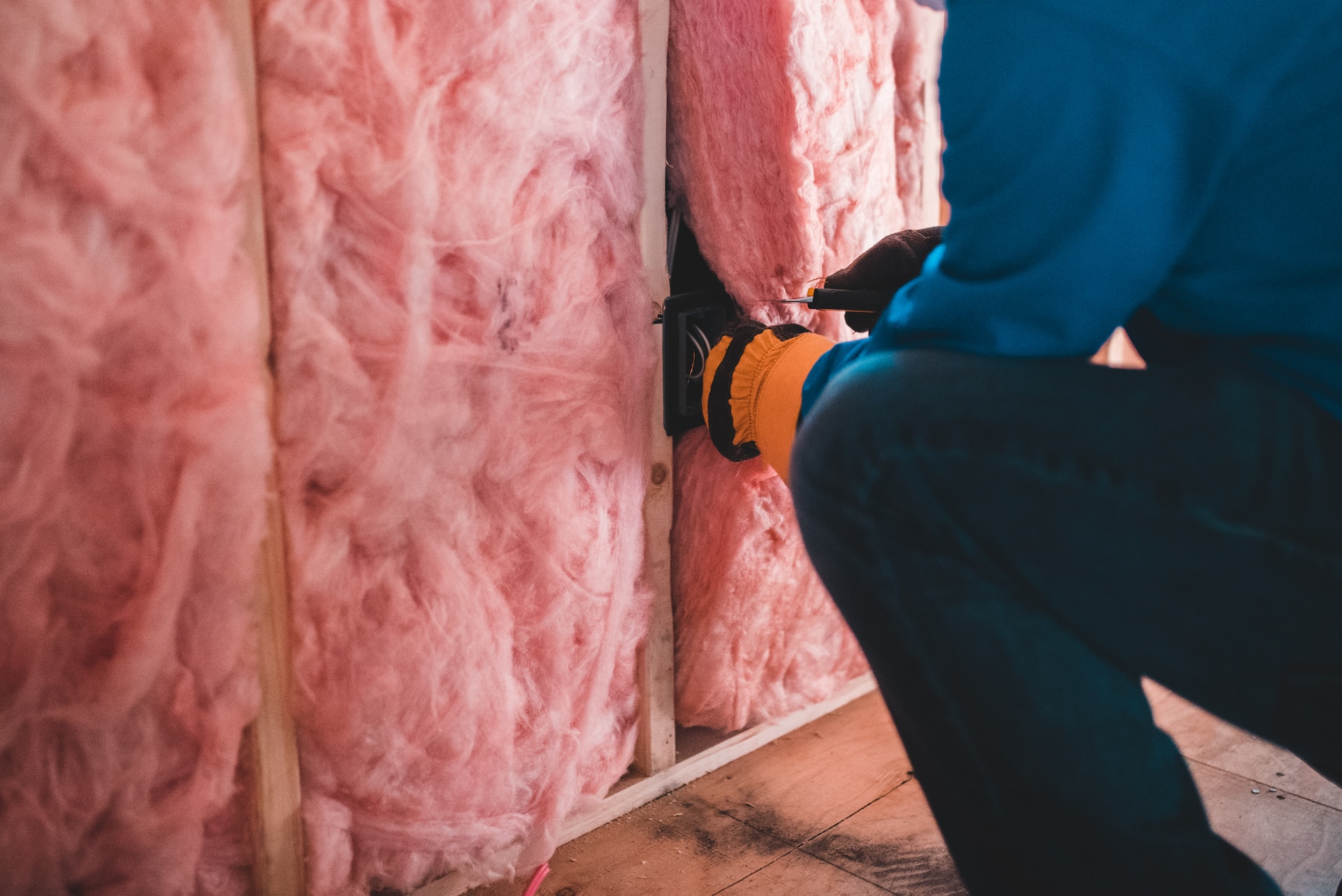
Insulating an already converted loft is a crucial step in creating a comfortable and energy efficient living space. With the rising cost of energy and the growing emphasis on sustainability, proper insulation plays a vital role in reducing heat loss, controlling temperature fluctuations, and minimizing energy consumption.
In this blog post, we will explore the importance of insulating an already converted loft, discuss the benefits it offers, and provide a comprehensive guide to help you navigate through the process. Whether you have recently converted your loft or are looking to upgrade the existing insulation, this article will equip you with the knowledge and insights needed to make informed decisions and create a well-insulated loft space.
Introduction: Understanding the Importance of Insulating an Already Converted Loft
So, you’ve got yourself a lovely loft conversion, huh? That extra space sure is handy, but have you given a thought to insulating it? Well, if not, it’s high time you do! Insulating your already converted loft is crucial for a number of reasons.
Why is Loft Insulation Important?
Loft insulation helps to keep your home cosy and warm during those chilly winter months. It acts as a barrier, preventing the escape of precious heat from your living space. Without proper insulation, you may find yourself shivering under piles of blankets when you should be snug as a bug.
Benefits of Insulating an Already Converted Loft
Insulating an already converted loft brings with it a bunch of benefits. Firstly, it helps to reduce your energy bills by keeping your home more energy-efficient. On top of that, proper insulation also decreases the carbon footprint of your home, making it more environmentally friendly. And let’s not forget about the soundproofing perks. Good insulation can help keep the noise from the outside world at bay, giving you the peace and quiet you deserve.
Assessing the Existing Insulation: Identifying Gaps and Inefficiencies
Inspecting the Current Insulation
Before you dive headfirst into insulating your loft, take a moment to assess the existing insulation. You need to know what you’re working with in order to address any gaps and inefficiencies. Check for any signs of wear and tear, gaps, or areas where the insulation may have shifted or become compressed over time.
Identifying Common Problems and Inefficiencies
Some common issues you might encounter include insufficient insulation thickness, poorly installed insulation, or gaps around pipes and vents. Identifying these problems will help you plan for the right fixes and ensure that you get optimal performance from your insulation.
Choosing the Right Insulation Material: Exploring Options for Loft Insulation
Types of Insulation Materials
When it comes to choosing the right insulation material for your already converted loft, you’re spoilt for choice! There are various options available, such as fiberglass, mineral wool, or even eco-friendly alternatives like sheep’s wool or recycled newspaper. Each material has its own pros and cons, so do some research and select the one that best suits your needs and budget.
Factors to Consider When Selecting Insulation
When deciding on the insulation material, keep factors like thermal conductivity, moisture resistance, and fire safety in mind. Additionally, consider the ease of installation and the availability of the material in your area. After all, you want to make sure you’re getting the most bang for your buck!
Preparing the Loft Space: Clearing and Cleaning for a Successful Insulation Installation
Removing Clutter and Obstacles
Before you start insulating, it’s time for some decluttering! Remove any unnecessary items or obstacles from your loft space. You’ll want a clean and clear area to work with, ensuring that the insulation can be installed properly and effectively.
Cleaning and Preparing the Surfaces
A clean slate is essential for a successful insulation installation. Give the surfaces of your loft a good cleaning, removing any dirt, dust, or debris. This will help the insulation adhere better and ensure a smooth and neat finish. Don’t worry, the dust bunnies won’t mind finding a new home elsewhere!
Insulation Methods: Step-by-Step Guide to Installing Insulation in an Already Converted Loft
Choosing the Appropriate Installation Method
Choosing the right insulation method for your already converted loft can make all the difference in keeping your space cosy and energy-efficient. There are a few different options to consider, depending on your budget, available space, and personal preference.
One popular method is to use insulation boards, which can be cut to fit snugly between the rafters and provide excellent thermal performance. Another option is spray foam insulation, which creates an airtight seal and can be applied even in hard-to-reach areas. Alternatively, you can opt for mineral wool insulation, which is easy to handle and offers good acoustic and thermal properties.
Consider your specific needs and consult with a professional to determine which method will work best for you. And remember, no matter which method you choose, it’s important to follow the manufacturer’s instructions and safety guidelines.
Installing Insulation in Different Areas of the Loft
When it comes to insulating an already converted loft, there are different areas to consider, each with its own insulation requirements.
For the pitched roof, you can install insulation between and over the rafters. This will help prevent heat loss and keep your loft space warm. It’s important to make sure there is adequate ventilation to prevent condensation.
For the walls, you can install insulation internally or externally. Internal insulation involves fixing insulation boards to the walls or using stud frames to create a cavity for insulation. External insulation, on the other hand, involves adding insulation boards to the outside of the walls and finishing with a weatherproof layer.
Don’t forget about the floor! Insulating the loft floor will not only help keep the space warm but also reduce noise transmission. You can use insulation boards or mineral wool between the joists to achieve this.
Remember to consider any electrical or plumbing installations in your loft and take necessary precautions when installing insulation around them.
Air Sealing and Ventilation: Ensuring Efficient Insulation Performance
Importance of Air Sealing
Insulation is not the only factor in creating an energy-efficient and comfortable living environment in your loft. Proper air sealing is essential to minimize air leakage, which can lead to drafts and energy loss. It’s like trying to keep warm in a sweater with holes; it just won’t work!
Seal any gaps or cracks in the walls, roof, and floor using caulk or weatherstripping. Pay close attention to areas around windows, doors, and electrical outlets. By sealing these areas, you can significantly improve the overall effectiveness of your insulation.
Strategies for Proper Ventilation
While air sealing is important, maintaining good ventilation in your loft is equally crucial. Proper ventilation helps remove moisture and pollutants from the air, preventing issues like condensation and mould growth.
Consider installing vents in the roof or walls to allow for airflow. You can also use extractor fans in bathrooms and kitchens to remove excess moisture. Additionally, make sure any existing ventilation systems in your loft are maintained and functioning properly.
By combining effective air sealing and ventilation strategies, you can ensure that your insulation performs at its best and keep your loft comfortable year-round.
Common Challenges and Solutions: Dealing with Obstacles in Retrofitting Loft Insulation
Dealing with Limited Access Points
One of the common challenges in retrofitting loft insulation is limited access points, especially in already converted lofts. This can make it difficult to reach certain areas and properly install insulation.
One solution is to use insulation materials that are flexible or can be cut to fit through small openings. For example, mineral wool can be easily manoeuvred into tight spaces. Alternatively, you can hire professionals who have experience working in confined areas and can ensure insulation is properly installed.
Addressing Structural and Wiring Considerations
Another challenge you may encounter is dealing with structural elements or wiring in your loft that can hinder the installation process. It’s important to address these considerations to avoid any damage or safety hazards.
Plan the layout of your insulation installation carefully, taking into account the location of structural elements and wiring. If necessary, you may need to reroute or modify wiring to ensure it can coexist safely with the insulation. Consult with a professional electrician to ensure all electrical work is done properly.
By addressing these challenges head-on, you can complete your loft insulation project successfully and enjoy a comfortable and energy-efficient living space.
Maintenance and Upkeep: Long-term Care for an Insulated Converted Loft
Regular Inspection and Maintenance Practices
Once you have insulated your converted loft, it’s important to maintain it properly to ensure its long-term performance. Regular inspection and maintenance practices are key for keeping your loft in top shape.
Inspect the insulation periodically to check for any signs of damage, such as moisture or mould growth. Keep an eye out for any drafts or temperature inconsistencies, as these could indicate insulation problems. If you notice any issues, address them promptly to prevent further damage.
In addition, make sure to maintain proper ventilation by cleaning filters, vents, and fans regularly. This will help ensure that air can flow freely and moisture can be effectively removed from the space.
Troubleshooting and Repairing Insulation Issues
If you encounter any insulation issues, it’s important to troubleshoot and address them as soon as possible. This could include addressing gaps in insulation, repairing damaged areas, or upgrading insulation in certain sections.
Depending on the severity of the problem, you may be able to handle repairs yourself or seek assistance from professionals. It’s essential not to neglect any insulation issues, as they can lead to energy loss, discomfort, and potentially expensive repairs down the line.
By following these maintenance and repair practices, you can ensure that your insulated converted loft remains efficient, comfortable, and problem-free for years to come.
Conclusion
Insulating an already converted loft is not only a wise investment but also a necessary step towards creating a comfortable and energy-efficient living space. By addressing any gaps or inefficiencies in the existing insulation, choosing the right materials, and following proper installation methods, you can significantly improve the thermal performance of your loft and reduce your energy bills. Regular maintenance and upkeep will ensure that your insulation continues to perform optimally for years to come. So, take the necessary steps to insulate your converted loft and enjoy the benefits of a cozy, well-insulated space that is both environmentally friendly and cost-effective.
Insulate a Converted Loft FAQs
Insulating an already converted loft is important for several reasons. Firstly, it helps to reduce heat loss, ensuring a comfortable living space and lower energy bills. Additionally, insulation helps to control temperature fluctuations, making the loft more pleasant throughout the year. Insulation also contributes to soundproofing, reducing noise from outside sources. Moreover, adequate insulation is essential for meeting building regulations and improving the energy efficiency of your home.
Yes, it is possible and highly recommended to install insulation in a loft that has already been converted. While the process may be a bit more challenging than insulating an unfinished loft, it is still achievable with the right techniques. The key is to assess the existing insulation, identify any gaps or inefficiencies, and choose the appropriate insulation material and installation method. With proper planning and execution, you can successfully insulate your already converted loft.
Choosing the right insulation material for your converted loft depends on several factors. Consider the R-value of the insulation, which indicates its thermal resistance. The higher the R-value, the better the insulation’s ability to resist heat transfer. Also, consider the available space for insulation, any specific requirements for fire safety or soundproofing, and your budget. Common insulation materials for lofts include fiberglass, mineral wool, cellulose, and spray foam. It’s best to consult with a professional or conduct thorough research to determine the most suitable insulation material for your specific loft conversion.
It is recommended to inspect and maintain the insulation in your converted loft on a regular basis. Inspections can be done annually or bi-annually to check for any signs of damage, moisture, or pest infestation. Additionally, ensure that the insulation is still properly installed and that there are no gaps or areas of heat loss. If any issues are detected, take prompt action to address them. Regular maintenance and upkeep will help prolong the lifespan and effectiveness of your loft insulation.
Ready to discuss your regeneration project and how NXTGEN Futures Ltd can elevate it with expert retrofit? Contact us today!
Latest Retrofit Posts
- What a retrofit-first approach offers the UKRetrofitting is like giving your home a makeover to make it more energy-efficient, comfortable, and healthy. The retrofit-first approach prioritizes upgrading existing buildings over new construction to tackle climate change and improve living conditions. Definition of Retrofitting Retrofitting involves making… Read more: What a retrofit-first approach offers the UK
- What is internal wall insulation?Internal wall insulation is a crucial component of creating a comfortable and energy-efficient living space. By insulating the walls within a building, homeowners can experience benefits such as improved thermal performance, reduced energy bills, and enhanced acoustic comfort. Understanding the… Read more: What is internal wall insulation?
- What is a retrofit assessor?Retrofit assessors play a crucial role in the sustainability and energy efficiency of buildings by evaluating and identifying opportunities for improvement. This blog post aims to provide an in-depth understanding of the responsibilities, qualifications, and benefits associated with being a… Read more: What is a retrofit assessor?
- What is a retrofit assessment in the UK?Retrofit assessments play a crucial role in the sustainable development of buildings in the UK, helping to improve energy efficiency, reduce carbon emissions, and enhance overall building performance. By evaluating existing structures and identifying opportunities for upgrades and enhancements, retrofit… Read more: What is a retrofit assessment in the UK?
- Retrofit and Energy Efficiency in Historic BuildingsHistoric buildings are not only architectural treasures but also valuable cultural assets that contribute to our sense of history and identity. However, many of these buildings often suffer from poor energy efficiency, leading to excessive energy consumption and high operating… Read more: Retrofit and Energy Efficiency in Historic Buildings
- What is retrofitting in construction?Retrofitting in construction is a crucial process that involves upgrading existing buildings or structures to meet modern standards of safety, energy efficiency, and functionality. This blog post explores the concept of retrofitting, its importance, various techniques used in the industry,… Read more: What is retrofitting in construction?
- CASE STUDY: Curtis WayDelivering a Holistic Retrofit Solution with EWI & Solar Energy Project Overview NXTGEN Futures Ltd. successfully completed a large-scale retrofit project on Curtis Way, Berkhamsted, England, UK. This case study showcases our expertise in External Wall Insulation (EWI), retrofit coordination,… Read more: CASE STUDY: Curtis Way
- What happens to a building during retrofitting?Building retrofitting is a vital process that involves making significant modifications and improvements to existing structures to enhance their efficiency, functionality, and sustainability. In this blog post, we will delve into the intricate workings of building retrofitting, exploring the various… Read more: What happens to a building during retrofitting?
- UK Government Retrofit Scheme: Making Energy Efficiency Cool AgainIntroduction to the UK Government Retrofit Scheme Background of the Retrofit Scheme Picture this: you’re sitting at home, snuggled up in your favourite blanket, enjoying a cup of tea, when suddenly you feel a draft. Not cool, right? Well, that’s… Read more: UK Government Retrofit Scheme: Making Energy Efficiency Cool Again
- What are Retrofit Trickle Vents?Improving indoor air quality and enhancing energy efficiency are key priorities for many homeowners. In this article, we will explore the concept of retrofit trickle vents and their role in achieving these goals. Trickle vents are small, adjustable openings integrated… Read more: What are Retrofit Trickle Vents?
- Retrofit Underfloor HeatingRetrofit underfloor heating has gained significant popularity as a cost-effective and efficient solution for enhancing the comfort and energy efficiency of existing buildings. Unlike traditional radiator systems, underfloor heating distributes warmth evenly across the floor, providing a comfortable and cozy… Read more: Retrofit Underfloor Heating
- Retrofit LondonRetrofitting has emerged as a crucial solution in transforming the landscape of cities, and London is no exception. As a global hub of culture, commerce, and innovation, London faces the pressing challenge of reducing its carbon footprint while ensuring sustainable… Read more: Retrofit London

